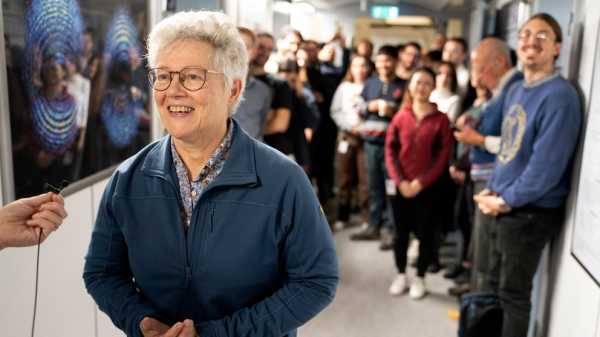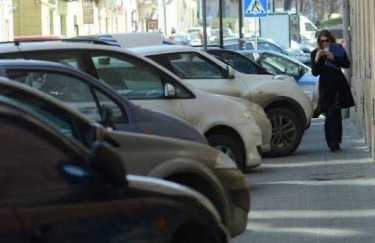
STOCKHOLM — Three scientists won the Nobel Prize in physics on Tuesday for giving us the first split-second glimpse into the superfast world of spinning electrons, a field that could one day lead to better electronics or disease diagnoses.
The award went to French-Swedish physicist Anne L’Huillier, French scientist Pierre Agostini and Hungarian-born Ferenc Krausz for their work with the tiny part of each atom that races around the center and is fundamental to virtually everything: chemistry, physics, our bodies and our gadgets.
Electrons move so fast that they have been out of reach of human efforts to isolate them, but by looking at the tiniest fraction of a second possible, scientists now have a “blurry” glimpse of them and that opens up whole new sciences, experts said.
“The electrons are very fast, and the electrons are really the workforce in everywhere,” Nobel Committee member Mats Larsson said. “Once you can control and understand electrons, you have taken a very big step forward.”
L’Huillier, of Lund University in Sweden, is the fifth woman to receive a Nobel in physics.
“For all the women, I say if you are interested, if you have a little bit of passion for this type of challenges, so just go for it,” she told The Associated Press.
The scientists, who worked separately, used ever-quicker laser pulses to catch the atomic action that happened at such dizzying speeds — one quintillionth of a second, known as an attosecond — much like the way photographers use fast shutters to capture a hummingbird feeding.
How small is that?
“Let’s take one second, which is the time of a heartbeat,” Nobel Committee chair Eva Olsson said. To get the realm of the attosecond, that would have to be divided by 1,000 six times.
Physicist Mark Pearce, a Nobel Committee member, said “there are as many attoseconds in a second as there are seconds which have passed since the Big Bang, 13.8 billion years ago.”
But even when scientists “see” the electron, there's only so much they can view.
“You can see whether it's on the one side of a molecule or on the other," said L'Huillier, 65. “It's still very blurry.”
“The electrons are much more like waves, like water waves, than particles and what we try to measure with our technique is the position of the crest of the waves,” she added.
Electrons are key because that's “how the atoms bind together,” L'Huillier said. It's where chemical reactions occur.
“Electrons are, even if we can’t see them, omnipresent in our life — our biological life and also our technical life, in our everyday life,” Krausz said at a news conference. “In our biological life, electrons form the adhesive between atoms, with which they form molecules and these molecules are then the smallest functional building stones of every living organism."
And if you want to understand how they work, you need to know how they move, Krausz said.
At the moment, this science is about understanding our universe, but the hope is that it will eventually have practical applications in electronics, diagnosing diseases and basic chemistry.
L'Huillier said her work shows how important it is to work on fundamental science regardless of future applications: She spent 30 years on it before possible real world uses became more apparent.
L’Huillier was teaching basic engineering physics to about 100 undergraduates at Lund when she got the call that she had won, but her phone was on silent and she didn't pick up. She checked it during a break and called the Nobel Committee.
Then she went back to teaching.
“I was very concentrated, forgot about the Nobel Prize and tried to finish my lecture,” she told the AP. She finished the class a little early so she could speak to the news conference announcing the prize at the Royal Swedish Academy of Sciences in Stockholm.
“This is the most prestigious and I am so happy to get this prize. It’s incredible," she told the news conference. "As you know there are not so many women who got this prize so it’s very special.”
The Nobel organization posted a photo of L'Huillier on social media holding a mobile phone to her ear.
“Dedicated teacher alert!” the post on X, formerly Twitter, said. “Not even the 2023 #NobelPrize in Physics could tear Anne L’Huillier from her students.”
And L'Huillier said because the prize was a secret at the time, she wasn't allowed to tell the students what happened, but she said they guessed.
Agostini, an emeritus professor at Ohio State University, was in Paris and could not be reached by the Nobel Committee before it announced his win to the world.
“I haven’t had a telephone call from the committee. Perhaps it's not true. I don't know," he told the AP, laughing. “I think the committee is looking for me in Columbus.”
“There are certainly younger people who would have appreciated it far more than me,” the 82-year-old joked. “It’s good but it is a bit late for me.”
But, he added, “I don’t think I would have deserved it more earlier!”
Krausz, of the Max Planck Institute of Quantum Optics and Ludwig Maximilian University of Munich, told reporters he was bewildered.
“I have been trying to figure out since 11 a.m. … whether I’m in reality or it's just a long dream,” the 61-year-old said.
The phone call from the Nobel committee said “no caller ID” and Krausz usually doesn't answer those calls, but this time, he said, “I thought I'd try it and then it became clear that I can't hang up so quickly.”
Last year, Krausz and L’Huillier won the prestigious Wolf prize in physics for their work, sharing it with University of Ottawa scientist Paul Corkum. Nobel prizes are limited to only three winners and Krausz said it was a shame it could not include Corkum.
Corkum was key to how the split-second laser flashes could be measured, which was crucial, Krausz said.
The Nobel Prizes carry a cash award of 11 million Swedish kronor ($1 million) from a bequest left by the prize’s creator, Swedish inventor Alfred Nobel.
The physics prize comes a day after two scientists won the Nobel Prize in medicine for discoveries that enabled the creation of mRNA vaccines against COVID-19.
___
Borenstein reported from Washington and Leicester from Paris. Associated Press journalists Mike Corder in The Hague, Netherlands; Nicolas Garriga in Paris; Jan M. Olsen in Copenhagen, and Geir Moulson in Berlin contributed.
___
Follow all AP stories about the Nobel Prizes at https://apnews.com/hub/nobel-prizes
Sourse: abcnews.go.com






